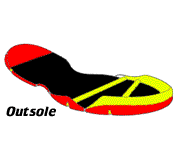Aggravating activities in chronic low back ache are not specifically directional !!!
Classifiable self reported aggravating activities in chronic low back ache are: aggravation in flexion, extension or unilateral bending. Wand BM et al tried to find do the self-reported aggravating activities of people with chronic non-specific low back pain move the spine in a consistent direction? In an observational study they found there is no evidence for the existence of a consistent direction of spinal movement during the self-reported aggravating activities of people with chronic non-specific low back pain . Participants in this study were described as demonstrating a directional pattern if all three self-reported aggravating activities moved the spine in the same direction. Result of the study by Wand BM et al: In their study over 148 participants with three classifiable aggravating activities they found: 1. Only 47 (32%) demonstrated a directional pattern. And out of them 2. 46 (98%) demonstrated a flexion pattern and 3. 1 (2%) an extension pattern. They have also ...




